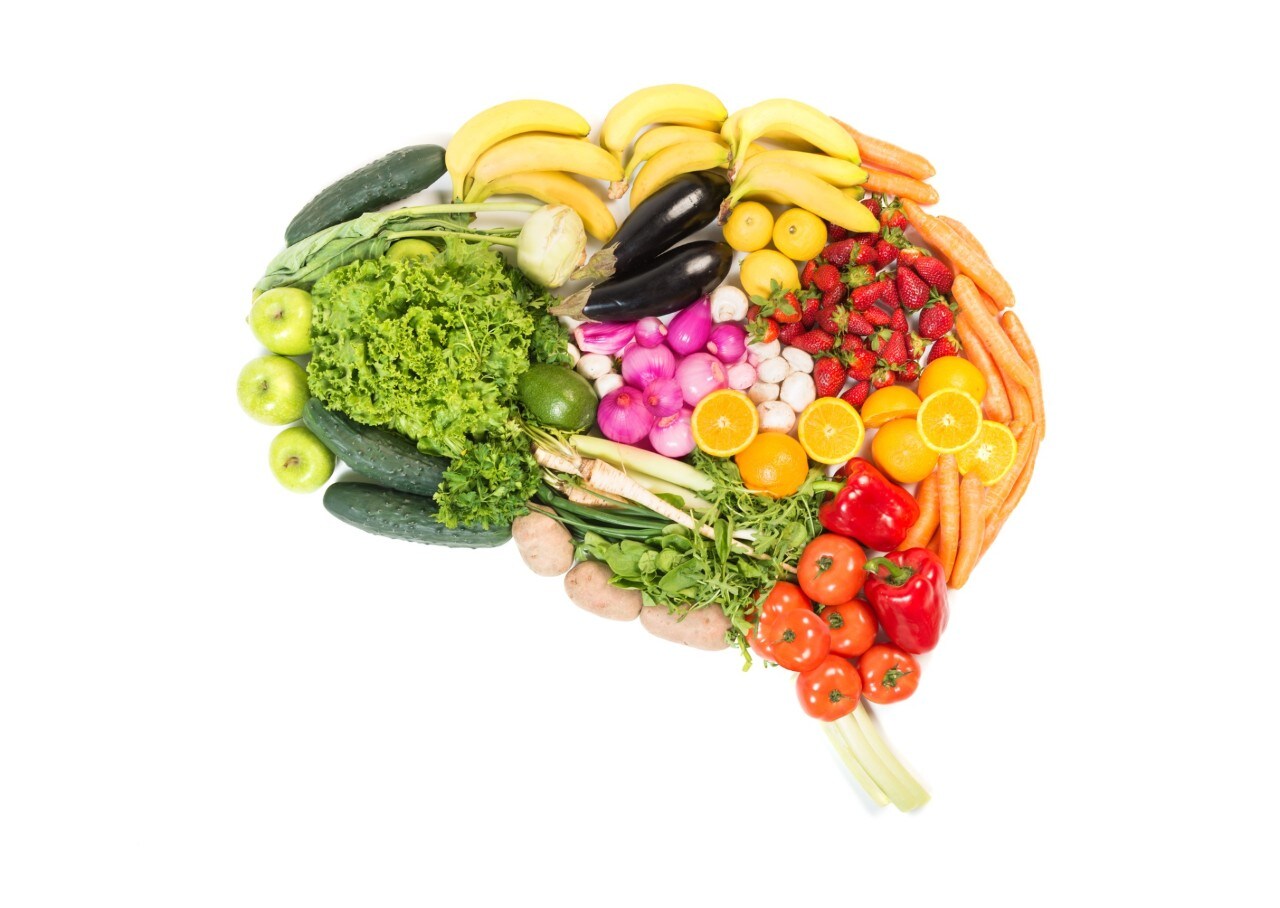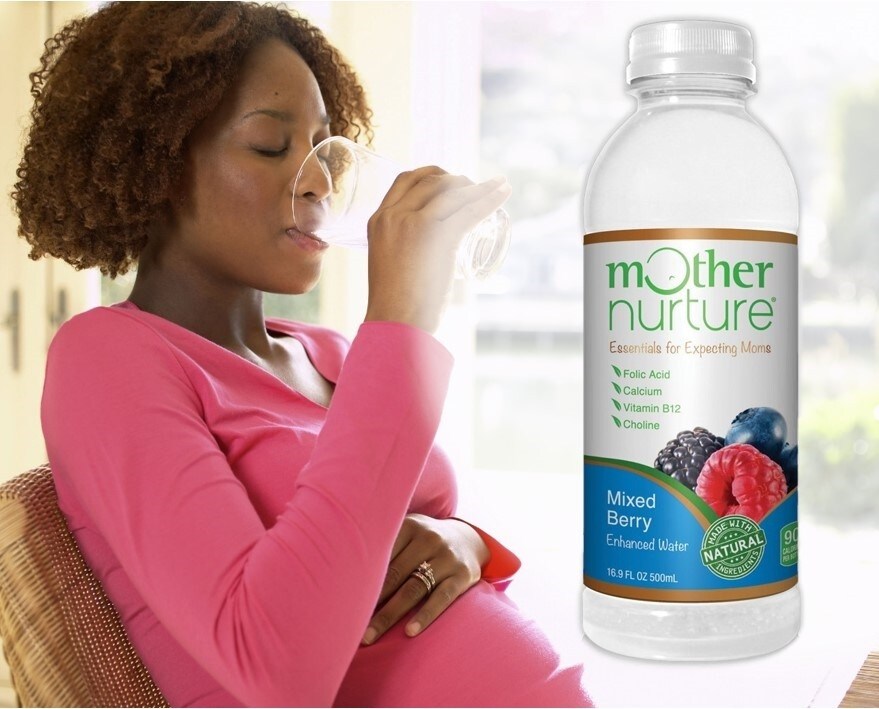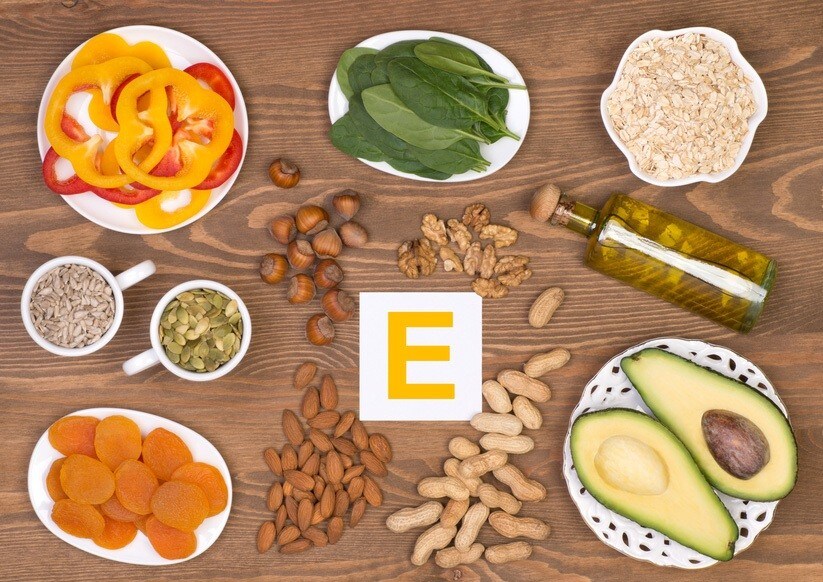
지속가능성 보고 카드 – 더블 A 등급 달성
DSM은 2017년에 기후 변화와 물 부문에서 A 등급을 받았습니다. 전 세계에서 더블 A 등급을 받은 기업은 단 25개뿐입니다. DSM의 지속가능성 노력에 대해 보다 자세히 알아보세요.
기분이 언짢을 때 풀어 주는 해피 알약이 있다면 좋지 않겠습니까? 남편, 혹은 아내에게 마구 화를 내고 싶을 때 마음을 진정시켜 주는 알약은 어떤가요? 알약은 아니지만 간편하게 만들 수 있는 방법이 있습니다. 우리가 먹는 (혹은 먹지 않는) 음식이 기분을 크게 좌우합니다. 뇌의 화학 작용을 바꾸는 음식과 영양소가 있습니다. 행복하게 만들기도 하고, 활기차게 만들기도 하고, 심지어 진정시키기도 합니다. 5가지 필수 해피 푸드를 소개합니다.
우울할 때는 자연스럽게 탄수화물이 당깁니다. 기분이 좋아지는 뇌의 화학물질인 세로토닌 수치를 올려주기 때문이죠. 통밀은 또한 혈당을 안정시키기 때문에 흰 빵보다 건강에 좋습니다. 반면에 정제된 곡물을 먹으면 혈당이 요동을 치고 초조해지며 성격이 나빠지고 배고파집니다. 오트밀도 좋습니다. 베타글루칸이라는 섬유질이 들어 있어 건강 범위 내에서 혈당을 잡아줍니다. 탄수화물로만 된 스낵을 먹고 세로토닌 수치를 끌어올려 보세요.
· 잼을 바른 100% 통밀 잉글리시 머핀 반 조각
· 꿀을 바른 시나몬 통밀 베이글 토스트 반 조각
· 작은 그릇에 담아 건크랜베리와 흑설탕 1 티스푼을 뿌린 오트밀
스트레스를 받을 때 설탕을 먹으면 진정됩니다. 샌프란시스코에 있는 캘리포니아 대학교 연구 결과 스트레스를 받은 쥐(사람의 스트레스 반응을 살피기 좋은 모델)에게 설탕을 마음껏 먹이면 일반 음식을 먹은 쥐보다 차분해진다는 사실이 드러났습니다. (1)
이 말만 듣고 자동판매기 쪽으로 달려가기 전에 기억하셔야 할 게 있습니다. 조금 먹었을 때 괜찮아진다고 해서 더 먹으면 좋다는 의미는 아닙니다. 설탕을 조금 먹으면 놀란 신경이 진정될 수 있지만, 너무 많이 먹으면 혈당 수치가 뒤죽박죽이 되어 장기적으로는 우울해질 수 있습니다. 사실 우울증과 싸우는 사람들이 단 것을 끊으면 우울감과 피로를 느끼기도 합니다. (2) 여기서 요령은 설탕을 조금만 먹으면 신경이 안정되고 기분이 좋아진다는 사실입니다. 너무 많이 먹어서 우울증을 부추기진 마세요. 다음과 같은 디지트를 만들어 먹으면 좋습니다.
· 생딸기를 ½컵 올린 작은 엔젤케이크 1조각
· 과일과 초콜릿 퐁듀: 무지방 초콜릿 시럽 ¼컵에 적신 생과일 조각(초콜릿에는 '사랑에 빠진' 것 같은 기분이 드는 아난다미드와 페닐에틸아민 같은 뇌 화학물질이 들어 있음)
· 라즈베리 1컵을 토핑한 베리 셔벗 2/3컵
오메가 3 지방산(DHA)을 많이 섭취하는 사람은 우울증과 공격성, 적개심이 줄어드는 경향이 있습니다. (20-25) 미국 정신의학회에서 오메가 3가 우울증 환자에게 중요하다는 성명을 발표할 만큼 오메가 3가 기분 장애에 유익하다는 증거는 너무나 많습니다.
왜 DHA가 기분에 그토록 중요할까요? 이 건강한 지방은 뇌에서 중요하게 작용합니다. 건강한 막을 형성해 영양소가 뇌 세포로 쉽게 이동하도록 돕고, 염증을 줄이며, 세로토닌 수치를 높이는 등의 작용을 합니다. 그래서 매주 DHA가 풍부한 식사를 하는 사람들의 우울증 유병률이 낮은 것인지도 모릅니다. 심지어 기억력이 향상되고 학교 성적이 좋아진다는 증거도 있습니다. 연어, 청어, 고등어, 정어리처럼 지방이 풍부한 생선을 일주일에 두 번 이상 먹거나 오메가 3 DHA 강화식품을 찾아보세요. (3-9)
매일 녹색 채소 먹기를 게을리하면 체내 세로토닌 생성에 꼭 필요한 B 비타민인 엽산의 수치가 낮아질 수 있습니다. 엽산 섭취가 낮으면 우울증, 피로, 기억력 약화의 위험이 증가하며 심지어 조현병 같은 심각한 정신 질환이 발병할 수 있습니다. 보조제로 하루 400 마이크로그램을 먹거나 이 정도 분량의 엽산이 든 시금치 무침 1 ½컵을 드세요. (10-16) 다음 요리를 만들어 보세요.
· 어린 시금치로 접시를 채운 다음 그 위에 구운 연어 살코기를 깔기
· 홈메이드 채소 수프에 잘게 썬 냉동 시금치 300g을 넣기
· 시금치 잎을 겹겹이 쌓은 샌드위치, 랩, 부리토
· 익혀서 자른 시금치를 매시드 포테이토에 섞기
검은콩과 같은 콩류는 대자연이 마련해 준 최고의 철분 공급원 중 하나입니다. 혈중 헤모글로빈의 구성 요소인 철은 체내 산소 운반에 꼭 필요합니다. 철분 수치가 떨어지면 세포 조직에 산소가 부족해져 피로해지고 집중력이 떨어지며 수면 장애가 옵니다. 철분 결핍은 어린이, 10대 소녀, 가임기 여성이 가장 걸리기 쉬운 영양소 결핍입니다. (17-19)
콩은 기분을 안정된 상태로 유지해 줍니다. 지방은 거의 없고 단백질과 수분, 섬유질은 많아 적은 칼로리로 포만감과 만족감을 느낄 수 있는 마법의 콤보입니다. 글리세믹 지수 또한 낮아 혈당은 물론 식욕 조절에도 도움이 됩니다.
검은콩을 넣어 식사하세요.
· 주철 냄비(냄비에서 철이 스며 나와 콩 요리의 철분이 많아짐)에서 콩을 요리하고 익힌 다음 시금치, 구운 홍후추, 살사와 함께 토티야에 싸서 드세요.
· 콩에 양파, 마늘, 커민을 버무린 다음 현미밥 위에 덮어 드세요. 오렌지 주스 한 잔과 함께 차려내세요(오렌지 주스의 비타민 C가 철분의 흡수를 강화해 줌).
· 샐러드 위에 검은콩을 뿌리고 칠면조 샌드위치와 함께 드세요('헴철'이라 불리는 칠면조의 철분이 '비헴철'이라는 콩의 철분 흡수를 높임).
참고 문헌
1.Dallman M, Pecoraro N, La Fleur S: Chronic stress and comfort foods: Self-medication and abdominal obesity. Brain, Behavior, and Immunity 2005;19:275-280. www.ncbi.nlm.nih.gov/sites/entrez?Db=pubmed&Cmd=ShowDetailView&TermToSearch=16876569&ordinalpos=7&itool=EntrezSystem2.PEntrez.Pubmed.Pubmed_ResultsPanel.Pubmed_RVDocSum
2. Christensen L, Pettijohn L: Mood and carbohydrate cravings. Appetite 2001;36:137-145. www.ncbi.nlm.nih.gov/sites/entrez?Db=pubmed&Cmd=ShowDetailView&TermToSearch=11237349&ordinalpos=184&itool=EntrezSystem2.PEntrez.Pubmed.Pubmed_ResultsPanel.Pubmed_RVDocSum
3. Richardson A, Burton J, Sewell R, et al: Docosahexaenoic acid for reading, cognition and behavior in children aged 7- 9 years. PLoS One 2012;7(9):e43909.
4. Song C, Shieh C, Wu Y, et al: The role of omega-3 polyunsaturated fatty acids eicosapentaenoic and docosahexaenoic acids in the treatment of major depression and Alzheimer’s disease. Progress in Lipid Research 2016; January 4th.
5. Chhetry B, Hezghia M, Miller J, et al: Omega-3 polyunsaturated fatty acid supplementation and white matter changes in major depression. Journal of Psychiatric Research 2016; 75:65-74.
6. Heras-Sandoval D, Pedrraza-Chaverri J, Perez-Rojas J: Role of docosahexaenoic acid in the modulation of glial cells in Alzheimer’s disease. Journal of Neuroinflammation 2016; March 10th.
7. Nishihira J, Tokashiki T, Higashiuesato Y, et al: Associations between serum omega-3 fatty acid levels and cognitive functions among community-dwelling octogenarians in Okinawa, Japan.
Journal of Alzheimers Disease 2016; February 16th.
8. Hibbeln J: From homicide to happiness: A commentary on omega-3 fatty acids in human Society. Nutrition & Health 2007;19:9-19.
9. Buydens-Branchey L, Branchey M, Hibbeln J: Associations between increases in plasma n-3 polyunsaturated fatty acids following supplementation and decreases in anger and anxiety in substance abusers. Progress in Neuropsychopharmacology 2008;32:568-575.
10. Shikany J, Heimburer D, Piyathilake C, et al: Effect of folic acid fortification of foods on folate intake in female smokers with cervical dysplasia. Nutrition 2004;20:409-414.
11. Green-Raleigh K, Carter H, Mulinare J, et al: Trends in folic acid awareness and behavior in the United States. Maternal Child Health Journal 2006;July 6th.
12. Young S: Folate and depression. Journal of Psychiatry and Neuroscience 2007;32:80-82.
13. Williams E, Steward-Knox B, Bradbury I, et al: Effect of folic acid supplementation on mood and serotonin response in healthy males. British Journal of Nutrition 2005;94:602-608.
14. Fact sheet on folate: https://ods.od.nih.gov/factsheets/Folate-HealthProfessional/
15. Arroll M, Wilder L, Neil J: Nutritional interventions for the adjunctive treatment of schizophrenia. Nutrition Journal 2014;September 16th.
16. Brown H, Roffman J: Vitamin supplementation in the treatment of schizophrenia. CNS Drugs 2014;28:611-622.
17. Manore M, Besenfelder P, Wells C, et al: Nutrient intakes and iron status in female long-distance runners during training. Journal of the American Dietetic Association 1989;89:257-259.
18. Iron deficiency prevalence: https://www.cdc.gov/mmwr/preview/mmwrhtml/mm5140a1.htm
19. Low M, Speedy J, Styles C, et al: Daily iron supplementation for improving anaemia, iron status and health in menstruating women. Cochrane Data Base System Review 2016;April 18th.
21. http://www.apa.org/news/press/releases/2009/12/dha-omega.aspx
22. Tanskanen A, Hibbeln JR, Tuomilehto J, Uutela A, Haukkala A, Viinamäki H, Lehtonen J, Vartiainen E: Fish consumption and depressive symptoms in the general population in Finland. Psychiatr Serv 2001; 52:529–531.
23. Silvers KM, Scott KM: Fish consumption and self-reported physical and mental health status. Public Health Nutr 2002; 5:427–431.
24. CrossRef, Medline 4. Tiemeyer H, van Tuijl HR, Hofman A, Kiliaan AJ, Breteler MMB: Plasma fatty acid composition and depression are associated in the elderly: the Rotterdam Study. Am J Clin Nutr 2003; 78:40–46

DSM은 2017년에 기후 변화와 물 부문에서 A 등급을 받았습니다. 전 세계에서 더블 A 등급을 받은 기업은 단 25개뿐입니다. DSM의 지속가능성 노력에 대해 보다 자세히 알아보세요.

이제 식품 제조업체에서 상품 라벨에 비타민 D 함량을 표기하는 것이 의무화되었습니다. 따라서 식품에서 비타민을 얼마나 섭취하고 있는지 확인할 수 있습니다. 하지만 이것만으로는 충분하지 않습니다. 그 이유에 대해 클리브랜드 클리닉의 미셀 로이젠 의사로부터 들어보세요.

장내 미생물이 소화기능, 면역 기능, 그리고 심지어 기분에까지 영향을 미칠 수 있다는 연구가 계속 입증되고 있습니다. 소화관을 최고의 상태로 만들 수 있는 자세한 방법에 대해 알아보세요.

미국에서 비타민 결핍증은 점점 더 생각보다 더욱 흔한 문제가 되어 가고 있습니다. 새로운 연구에 따르면 미국 성인 중에서 거의 1/3이 최소 1가지 이상의 비타민 결핍증에 걸릴 위험이 있습니다.



임신 중이거나 임신을 계획하고 있는 사람이라면 아마도 엽산을 섭취하라는 소리를 들어봤을 것입니다.


임신했다면 단 것, 짠 것, 신 것, 튀김 등 식욕이 증가할 수 있습니다. “YOU: Having a Baby(아이를 가진 당신)”라는 책에 따르면 임신한 여성의 75%가 식욕이 증가했다고 합니다.

미국심장학회의 2014년 심장병과 뇌졸중 최신 통계에 따르면 심장병과 뇌졸중은 여전히 미국인의 사망 원인 1위, 2위입니다. 장기적인 심장 건강 예방관리는 빨리 시작하면 할수록 좋습니다. 심장병에 맞서 싸울 가장 좋은 방법은 무엇일까요? 건강한 식습관입니다.
22 November 2016

DSM은 2017년에 기후 변화와 물 부문에서 A 등급을 받았습니다. 전 세계에서 더블 A 등급을 받은 기업은 단 25개뿐입니다. DSM의 지속가능성 노력에 대해 보다 자세히 알아보세요. 자세히보기.

이제 식품 제조업체에서 상품 라벨에 비타민 D 함량을 표기하는 것이 의무화되었습니다. 따라서 식품에서 비타민을 얼마나 섭취하고 있는지 확인할 수 있습니다. 하지만 이것만으로는 충분하지 않습니다. 그 이유에 대해 클리브랜드 클리닉의 미셀 로이젠 의사로부터 들어보세요. 자세히보기.

장내 미생물이 소화기능, 면역 기능, 그리고 심지어 기분에까지 영향을 미칠 수 있다는 연구가 계속 입증되고 있습니다. 소화관을 최고의 상태로 만들 수 있는 자세한 방법에 대해 알아보세요. 자세히보기.

미국에서 비타민 결핍증은 점점 더 생각보다 더욱 흔한 문제가 되어 가고 있습니다. 새로운 연구에 따르면 미국 성인 중에서 거의 1/3이 최소 1가지 이상의 비타민 결핍증에 걸릴 위험이 있습니다. 자세히보기.

영양사 겸 유명 저술가인 엘리자베스 소머가 태양 빛 아래서 그리고 전자기기 시청 시 눈을 보호하는 방법을 설명합니다. 자세히보기.
